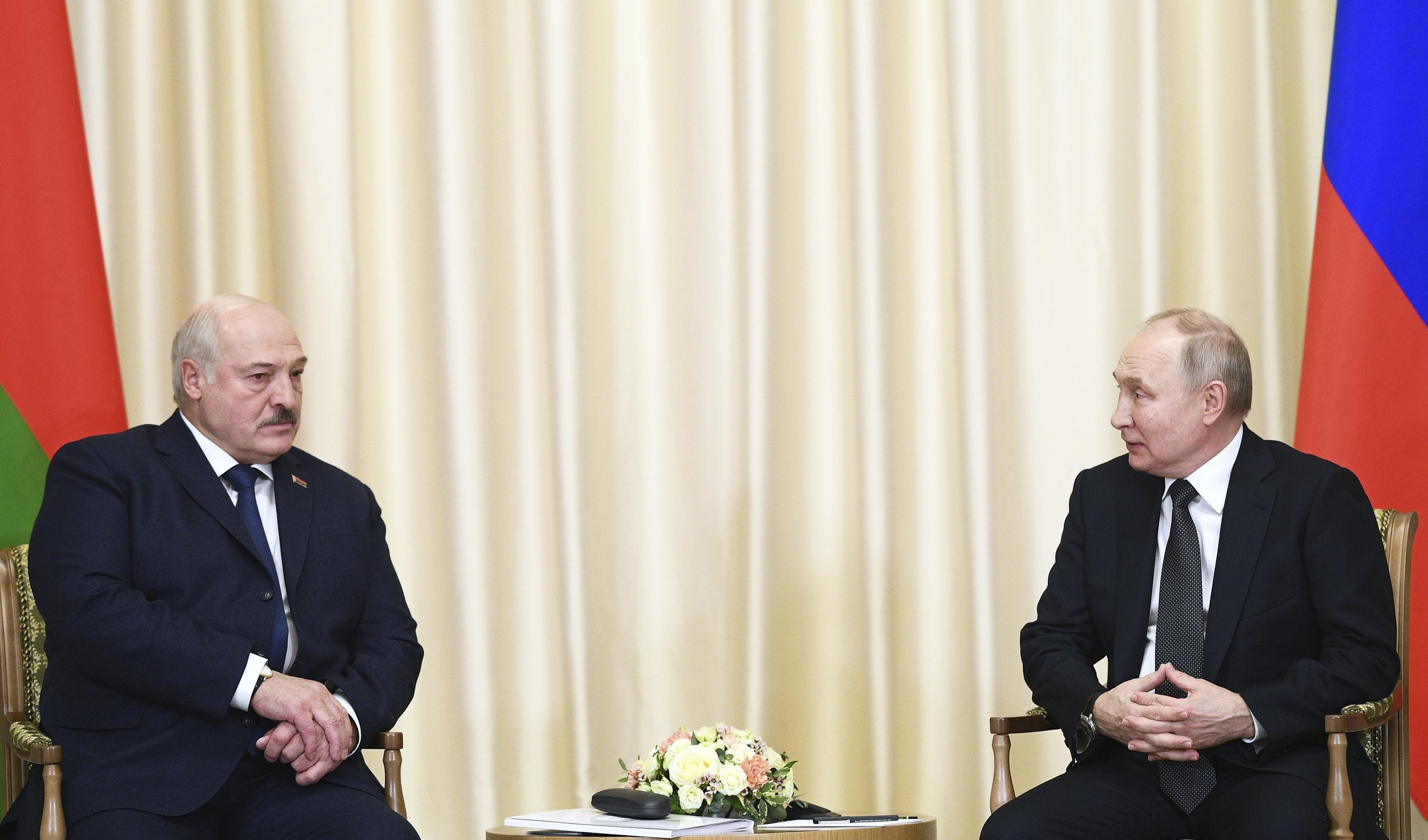Will Belarus Join the ‘Special Military Operation’?
Image source: AP News
Since the February 24th invasion, Belarus has aided Russia in every capacity short of direct intervention. Belarusian territory was a major deployment area for Russian forces in the first phase of the war—while Minsk presently provides logistical support, supply lines, and medical care for the ‘Special Military Operation’—even providing air bases for Russian aircraft. However, the recent rotation of several thousand Russian troops into southern Belarus has raised concerns over whether or not Belarus will formally join the war.
Belarus and Russia are arguably each others’ closest strategic partners. Russian economic assistance has allowed Minsk to weather Western sanctions, and Russian intelligence services played a crucial role in cracking down on the 2021 Belarusian protests. In turn, Belarus provides strategic depth and military facilities for its Eastern neighbor—essentially acting as a Russian buffer zone against the NATO bloc. So interlinked are these regimes that unity talks have occurred intermittently since 1996, producing a supranational ‘Union State’ wherein Minsk and Moscow collaborate on economic and defense policy. Despite President Lukashenko’s reported (mutual) dislike for his Russian counterpart, it seems that his regime is heavily dependent on the Kremlin’s goodwill.
President Lukashenko has insisted that Belarus will not intervene, stating at the November 25th CSTO Summit, “if we use the Armed Forces’ personnel to get involved in this conflict, we will add nothing to it… On the contrary, we will make things worse. It is not Belarus’ role in this conflict.” Indeed, of the armed forces’ 62,000 personnel, around 45,000 are on active duty. In accounting for the relatively small ground forces, second-rate hardware, and the reportedly low morale amongst servicemen, it is easy to see that an intervention would be a risky and needless escalation. According to Chatham House, 79% of Belarusians are opposed to intervention, with over half insisting on neutrality—meaning that an entry into the war may be the source of another outbreak of unrest.
But the decision may not be in Lukashenko’s hands. Russia’s annexation of four Ukrainian territories allows the Kremlin to call on Belarus' intervention on the basis of the Union Treaty, as in November of last year, when Lukashenko signed a clause which states that an attack on a member-state’s ‘territory’ necessitates a collective response. The current maneuverings in southern Belarus are in response to an alleged Ukrainian military threat, leading some to speculate that a Russian false-flag attack may be sufficient in pushing Minsk over the line.
However, it is likely that the joint exercise is merely a ruse. Nine thousand Russian reservists, along with a sizable fraction of Belarusian active personnel, may not be enough to cover the 674-mile border. In comparison, around 15,000 Russian troops participated in the assault on Kiev alone. Additionally, the rotating Russian forces have not brought heavy equipment as of now—such as tanks or armored personnel carriers—indicating that a ground offensive may not be in the works. The Kremlin most likely understands that the ramifications of Belarusian intervention may pose a grave threat to the Lukashenko regime, and that Minsk’s support would still be militarily inconsequential. The fact that Russian training facilities have reached capacity since the partial mobilization has led to speculation that the rotation of troops may indeed be part of training reservists. But this decision was not made without strategic considerations. Even if a military intervention is unlikely, Ukraine is forced to divert manpower and resources from more critical sectors of the front to meet a potential threat. And the more the Union increases the threat—like establishing restricted military zones in Southern Belarus (which suggests an intent to deploy large numbers of troops)—on the banning of international travel for Belarusian soldiers, the more Ukraine is forced to reorient some of its units towards its northern border.,
This potential bluff could merely be a component in Russia’s strategy this coming winter. The Russian bombardment of strategic infrastructure—such as electricity grids and water plants, the mobilization of over 300,000 reservists, and now the rotation of 9,000 troops to Belarus—may all constitute the groundworks of a coming offensive. Russia may be attempting to degrade Ukraine’s military capabilities and demoralize its population through the air campaign, while simultaneously baiting Kiev at the Belarusian border in order to overwhelm key Ukrainian positions with a mass of reservists. In this hypothetical situation, it would be plausible to assume that Russia would attempt to ‘recapture’ lost territories in its annexed Oblasts, like the recently evacuated city of Kherson. It is hard to say whether or not the Kremlin would try its hand at capturing earlier objectives of the ‘Special Military Operation’ like Odessa, Kharkiv, or Kiev. But the fog of war leaves no room for anything beyond guessing, and this conflict, in its numerous turns, has proven to be highly unpredictable.
References
Glod, Katia. “Belarus Joining The War in Ukraine Could Be Risky, Even for Putin.” Opinions | Al Jazeera, Al Jazeera, 16 Oct. 2022, https://www.aljazeera.com/opinions/2022/10/16/belarus-joining-the-war-in-ukraine-could-be-risky-even-for-putin.
Cole, Brendan. “Lukashenko Details Reason Belarusian Troops Will Not Join Putin's War.” Newsweek, Newsweek, 25 Nov. 2022, https://www.newsweek.com/russia-belarus-lukashenko-putin-ukraine-war-1762333.
Rainsford, Sarah. “Ukraine War: Russia Troop Deployment to Belarus Prompts Speculation.” BBC News, BBC, 25 Oct. 2022, https://www.bbc.com/news/world-europe-63386634.

